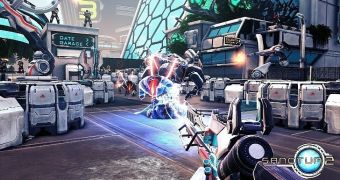Coffee Stains Studios revealed that the Windows PC sales of its first-person shooter and tower defense hybrid constituted 95 percent of the game's total revenue.
Sanctum 2 is the sequel to 2011's innovative game of the same name, where players assume the role of an elite soldier who has to protect the world of Elysion One from a horde of alien creatures.
Developer Johannes Aspeby revealed the information in a postmortem post on Gamasutra, talking about what went on behind the scenes during the game's creation process.
"In retrospect the console ports were a bad idea — we've made about 95 percent of our revenue from PC, so having a day 1 port is not something we want to do again," Aspeby wrote.
Sanctum 2 was launched on Xbox Live Arcade and Windows PC on May 15, with the PlayStation Network version following soon after.
According to Aspeby, a third of the programming time was spent on consoles, but, unfortunately, the payoff was nowhere near the amount of work put in.
In retrospect, he pointed out that the team shouldn't have concentrated on DLC for the Xbox 360 version, due to the game's poor performance on the platform, in the same way they didn't focus on creating DLC for the PlayStation 3 edition, because of the very poor sales.
"We're still unsure of why we sold so much more on Steam than on consoles, but if we'd take a guess we'd say that it could be because visibility is much easier to get on Steam with daily deals, free weekends, etc, compared to consoles, where we got pretty much no visibility at all," he explained.
He revealed that making the consoles version of Sanctum 2 proved to be a double-edged sword, with many crunch periods over the last months of development, due to failing to meet projected deadlines.
He did note, however, that the game is much more stable as a result of the work put in developing the consoles port, and because of all the harsh testing and optimizing, the system requirements of the PC version also went down a lot.
"Since the consoles weren't able to deliver the game we wanted them too, the game had to take some hard punches. Limitations on how many enemies we could have and introducing a tower cap wasn't something we wanted to introduce, but were forced to since we couldn't release a different version of the game on Steam. Our core vision of the game was getting in trouble here, and there was nothing we could do about it," Aspeby concluded.
The post is quite lengthy, but it is a worthwhile read for anyone interested in various highlights of the development process such as concerns with DLC, planning for diversification, external testing, listening to player feedback and post-launch support.

 14 DAY TRIAL //
14 DAY TRIAL //